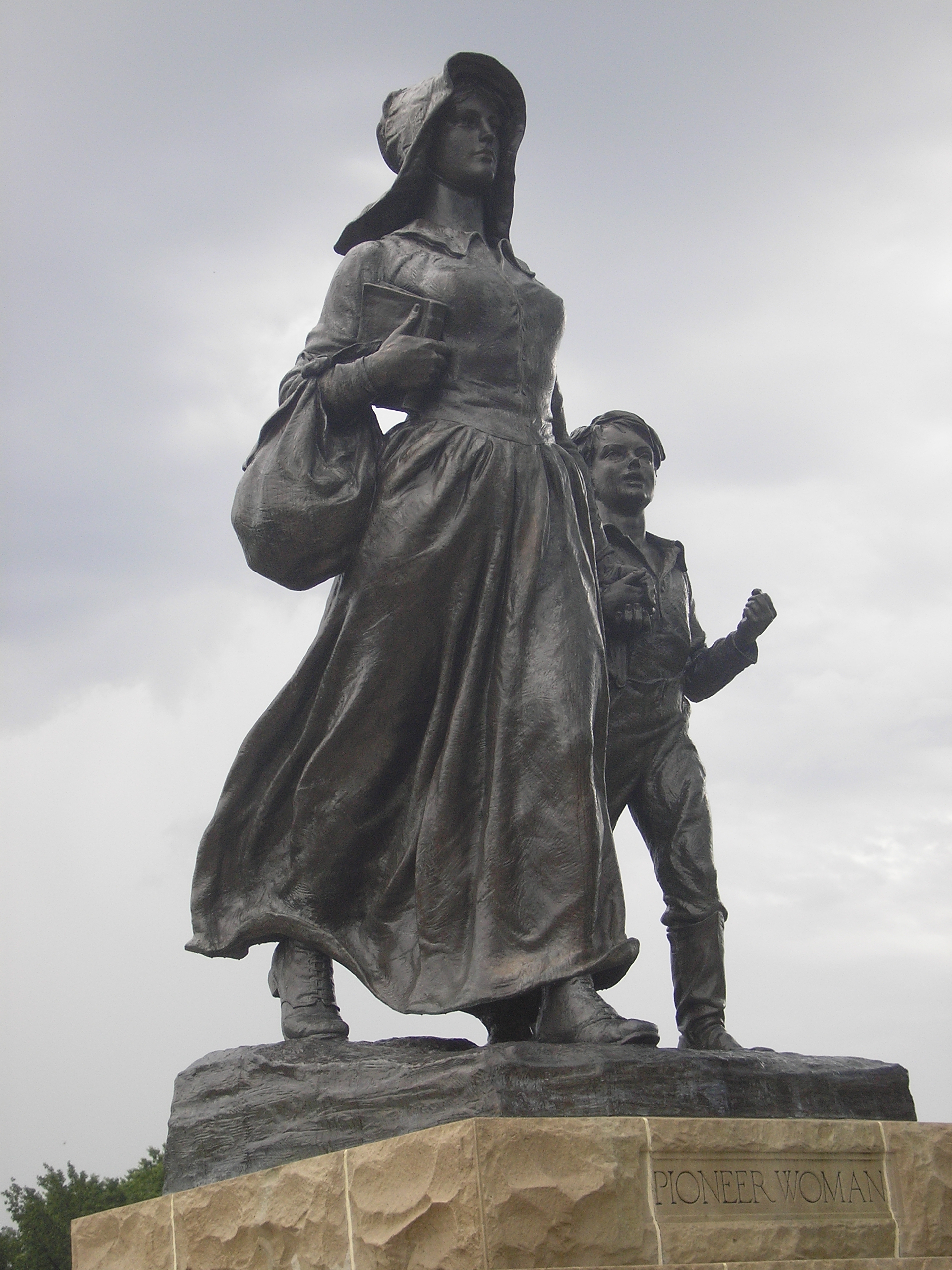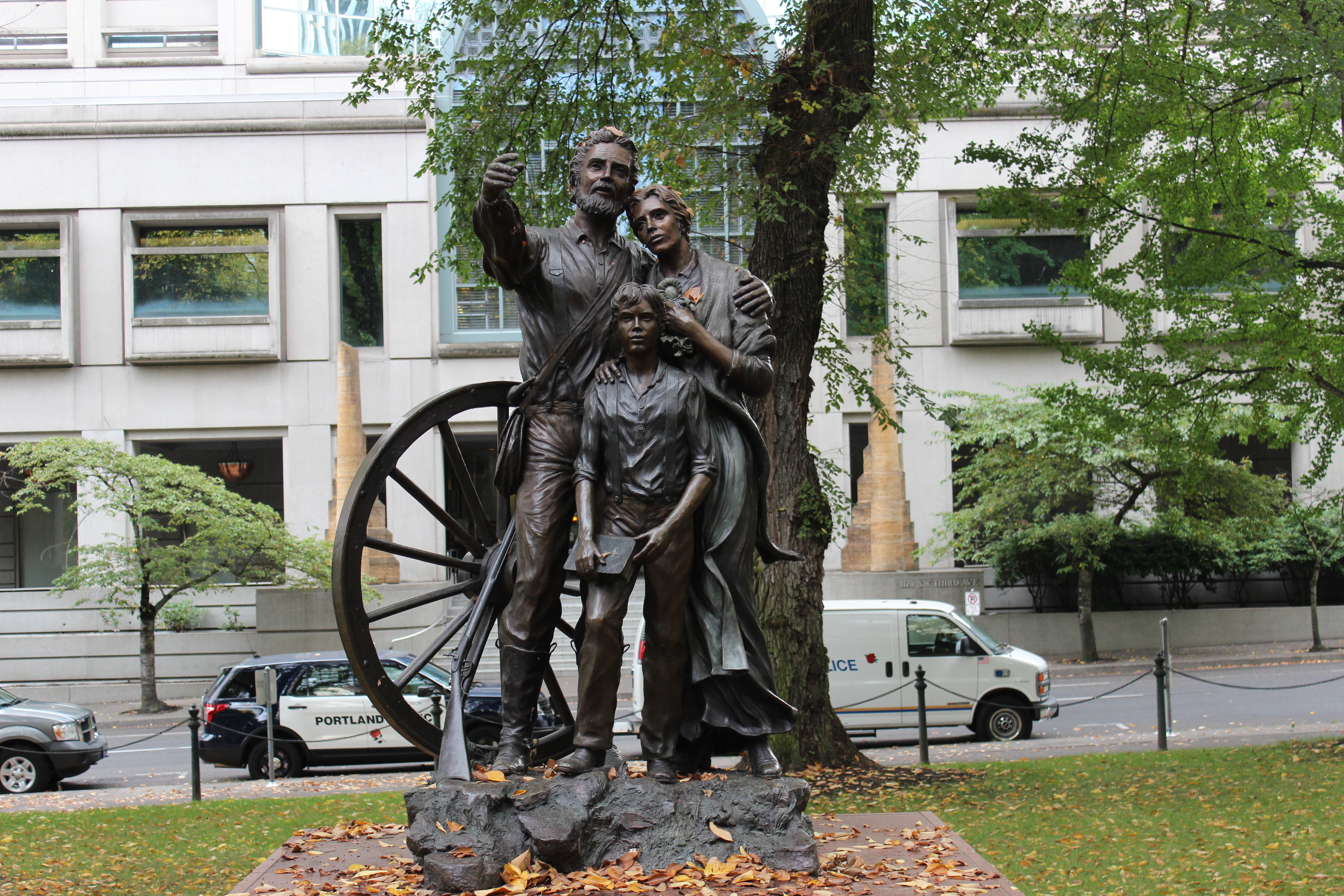Editor’s note: The triennial Berkshire Conference on the History of Women, Genders, and Sexualities – will be hosted by Hofstra University in Hempstead, New York, USA, on June 1-4, 2017. In the months leading up to the “Big Berks” conference, we will be highlighting research on rural women that will be presented at that conference. This week, we share an abstract from a session focused on rural women, “The Rural Imaginary in Popular Culture,” that will include several members of the Rural Women’s Studies Association.
Pioneer Mother Monuments and the All-American Family
Cynthia Culver Prescott, University of North Dakota

Bryant Baker, Pioneer Woman, 1929, Ponca City, Oklahoma
In the early twentieth century, communities throughout the United States erected commemorative monuments to their white forefathers sculpted by prominent artists. Both scholars and the wider public have largely ignored the numerous monuments commemorating white settlement of the American West that were erected after the supposed closing of the frontier in the 1890s. Even less scholarly and public attention have focused on postwar monuments to white settlers erected in response to more recent social change.
During the 1920s, changing gender norms, xenophobia, and rural nostalgia combined to produce a common iconography of a sunbonneted white woman carrying white “civilization” westward, armed with either a Bible or rifle. Despite the growing popularity of cowboys and Indians in film and television, public interest in these “pioneer mothers” declined after World War II. Centennial celebrations inspired small towns to erect statues by local artists depicting frontier families. Most western urbanites largely ignored these pioneer monuments in their midst.

David Manuel, The Promised Land, 1993, Portland, Oregon
Yet even as interest in older monuments waned, the New Western History and the rise of heritage tourism collided to inspire a new wave of more varied pioneer monuments beginning in the 1990s. Assessing public reception of the monuments erected from the 1890s to the present uncovers the ways that Americans used western mythology to enshrine particular notions of white civilization, to define American nationhood, and to grapple with social change.
Another abstract from the Berks “Rural Imaginary in Popular Culture” session is available here.

Pingback: Gender, Rurality and Imaginary for National and Commercial Purposes | Rural Women's Studies
Pingback: Cowgirls and the Discourses of Patriarchy and Feminism in Country/Western Music | Rural Women's Studies
Pingback: The Past, Present and Future of Rural Women’s Studies | Rural Women's Studies